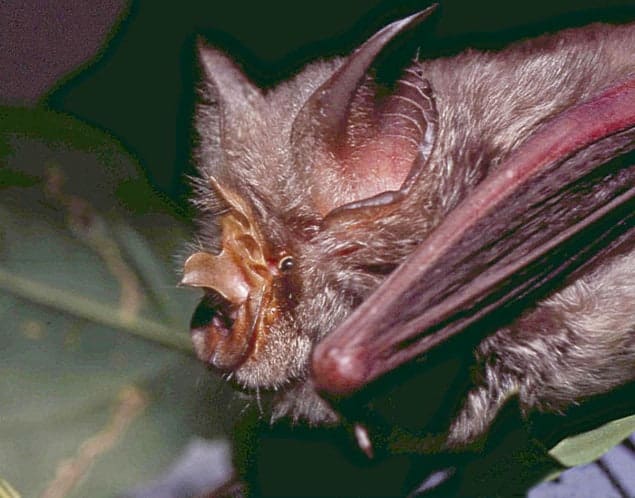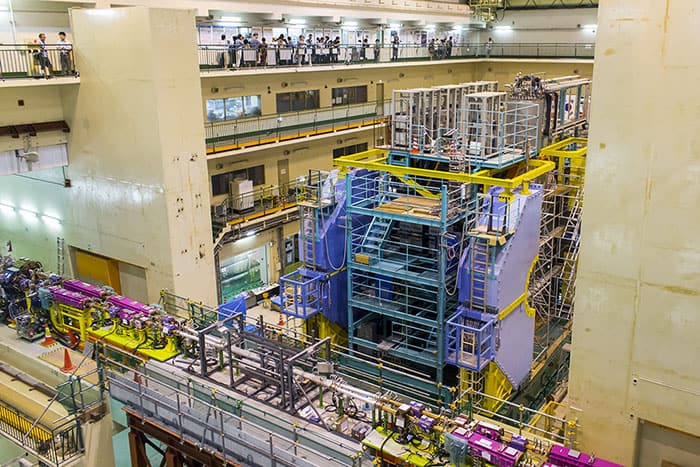Flash Physics is our daily pick of the latest need-to-know developments from the global physics community selected by Physics World‘s team of editors and reporters

Wiggling ears and noses keep bats on target
Horseshoe bats wiggle their ears and noses to boost their ability to navigate using ultrasound. That is the conclusion of Rolf Müller of Virginia Tech and colleagues, who have done mechanical and computer simulations that show that the wiggles could improve the bats’ ability to resolve direction by up to a factor of 1000. A horseshoe bat emits ultrasound from its nose and detects the reflected signal using its ears. The creature’s nose and ears have complex external structures – called noseleaves and pinnae, respectively – that diffract sound waves upon emission and reception. Bat experts also know that the shapes of the noseleaves and pinnae can change rapidly and that this has an effect on the sound used for echolocation. To understand why, Müller’s team created robotic models of noseleaves and pinnae and measured their acoustic properties when they were wiggled to mimic living bats. When combined with computer simulations, the measurements suggest the wiggling can result in a 100–1000 fold improvement in direction resolution over what can be achieved with static noseleaves and ears. Writing in Physical Review Letters, the researchers point out that very little is known about how bats use echolocation to navigate in complex natural environments. They suggest that a better understanding of the dynamic nature of the noseleaves and pinnae could boost our understanding of these incredible creatures and also lead to navigation technology inspired by bats.
Pressure helps supercooled water flow
The viscosity of supercooled water decreases by 42% when under pressure, according to scientists in France. Usually liquids become thicker when pressure is increased, but more than a century ago the opposite was observed to happen for water below 32 °C. This occurs because the application of pressure breaks the intermolecular hydrogen bonds that provide the water with its unusual properties. As the network of hydrogen bonds increases with cooling, the effect of pressure should be stronger. Frédéric Caupin and colleagues at the University of Lyon have studied this phenomenon in supercooled water – liquid water below the freezing point – which is a difficult feat as the liquid is liable to crystallize. Using a time-of-flight viscometer, the team measured water flow for temperatures down to –29 °C and pressures up to 3000 atmospheres. Finding that the viscosity decreased by nearly a half, Caupin and colleagues propose a model that treats water as a mixture of two species – a high-density “fragile” liquid and a low-density “strong” liquid. As described in PNAS, the ratio of these fluids explains water’s unusual thermodynamic and dynamic properties.
BELLE II detector rolls into collision point

The BELLE II particle detector has been moved 13 m from its place of assembly to a collision point on the SuperKEKB collider in Japan. The SuperKEKB accelerator is an electron–positron collider that is designed to create large numbers of B-mesons. It is a major upgrade to the KEKB collider, which operated in 1998–2010 and included the Belle detector. In 2001, Belle discovered the existence of charge–parity symmetry violation (CP violation) with B-mesons. This confirmed the theoretical prediction of Makoto Kobayashi and Toshihide Maskawa, who shared the 2008 Nobel Prize for Physics for that work. SuperKEKB will achieve a collision rate that is about 40 times higher than KEKB, and BELLE II is designed to collect much more data than Belle and operate at a much improved measurement precision. Standing 8 m tall and weighing 1400 tonnes, BELLE II is expected to start taking data in 2018. It will do further studies of CP violation as well as perform searches for physics beyond the Standard Model.
- You can find all our daily Flash Physics posts in the website’s news section, as well as on Twitter and Facebook using #FlashPhysics.



